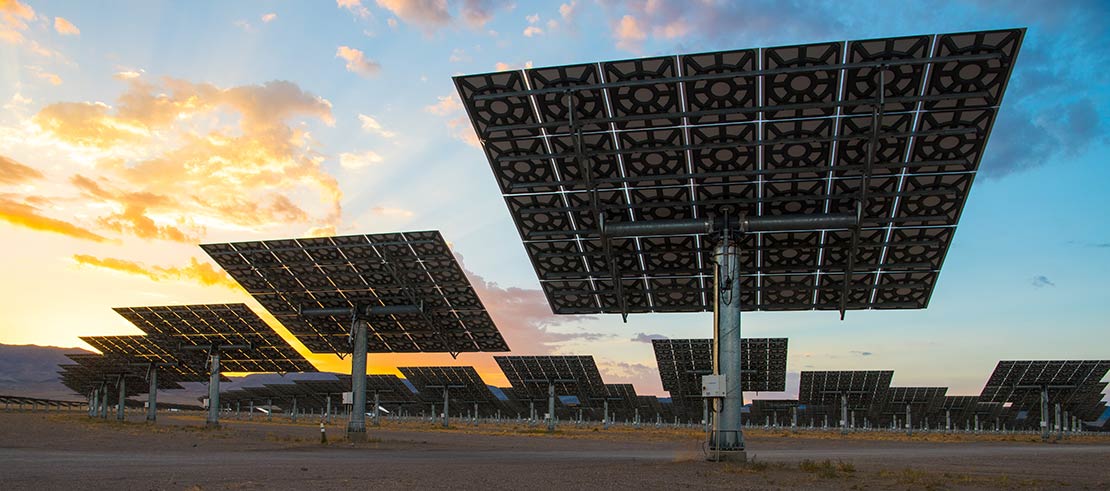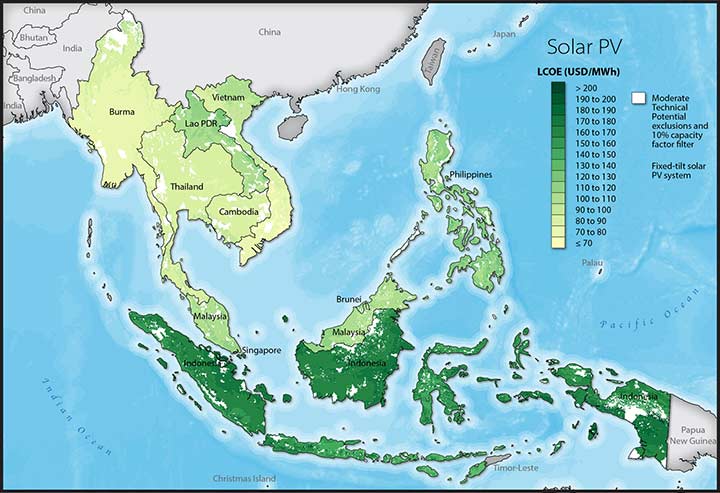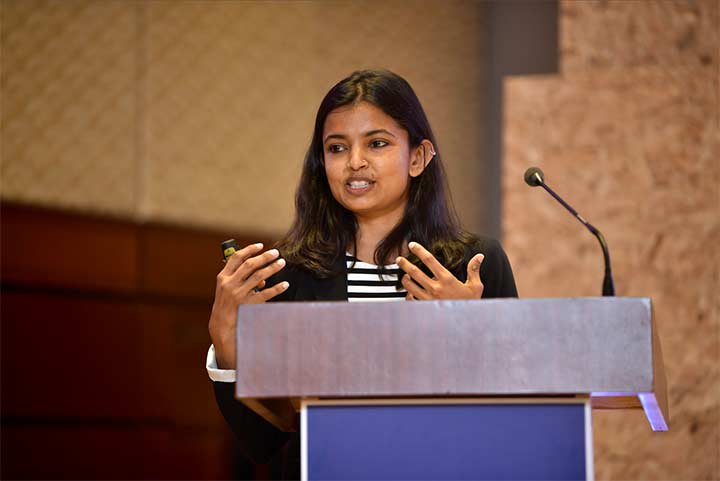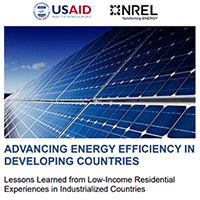Summer 2019 USAID-NREL Partnership Newsletter
Read our Summer 2019 issue for updates on our country activities, events, and global toolkits and resources.
To receive our newsletters via email, subscribe.
USAID-NREL Partnership Launches Resilient Energy Platform to Help Countries Plan Reliable and Secure Energy Systems

The power sector is susceptible to natural, technological, and human-caused threats due to weaknesses within infrastructure, systems, or operations. The USAID-NREL Partnership helps take the guesswork out of planning for power sector resilience with the new Resilient Energy Platform. The platform provides expertly curated resources, training materials, data, tools, and direct technical assistance for planning resilient, sustainable, and secure power systems.
Additional Resources
Resilient Energy Platform Website
Power Sector Resilience Planning Guidebook
General fact sheet in English, Spanish, or Lao
Quick Reads
Institutional Solutions to Enhance Power Sector Resilience
Power Sector Resilience Technical Solutions
Abundant, Cost-Competitive Renewable Energy Potential Found Across Southeast Asia
Using the first-ever Levelized Cost of Energy (LCOE) Mapping Tool, now available on Renewable Energy Data Explorer, a new USAID-NREL report shows great potential for utility-scale, land-based wind and solar PV across Southeast
Asia. The analysis shows that the potential solar capacity exceeds 41 TW (or 59,386
TWh annually), and the potential wind capacity exceeds 1.8 TW (or 3,159 TWh annually),
at PV costs ranging from $64 to $246 per MWh and the costs to develop wind ranging
from $42 to $221 per MWh (in specific scenarios).
The new tool allows users to analyze costs of developing solar and wind energy based
on resource data and country-specific techno-economic inputs. The report, its findings,
and the LCOE Mapping Tool were all recently featured in this article from PV Magazine.

Recent Events

USAID-NREL Partnership Work Helps Make the Asia Clean Energy Forum a Success
The Asia Clean Energy Forum (ACEF) convened a diverse community of over 1500 practitioners and implementers to
identify, discuss, and address opportunities for the clean energy transition. The
USAID-NREL Partnership provided innovative tools including the LCOE of Utility-Scale Wind and Solar Photovoltaics, and convened deep-dive workshops to address Barriers to Private Sector Engagement in Utility-Scale Wind and Solar and grid integration. In addition, the USAID-NREL Partnership team shared knowledge
on emerging technologies like Floating Photovoltaics.
What's New
Renewable Energy Explorer

Renewable Energy (RE) Explorer provides renewable energy data, geospatial analysis tools, publications, and technical assistance to support data-driven renewable energy decision making.
Launching Haiti and the Dominican Republic RE Data Explorer
In addition to the new LCOE Mapping Tool, two new countries are being added to Renewable Energy Data Explorer—Haiti and the Dominican Republic. RE Data Explorer supports decision makers in exploring renewable energy potential, scaling up investment, and developing policies. To learn more, visit RE Data Explorer.
I-JEDI Model Now Includes 18 Additional Countries

New tools are now available on the International Jobs and Economic Development Impacts (I-JEDI) website, allowing users to estimate the potential economic impacts of wind, solar, biomass,
and geothermal energy projects in 18 additional countries.
Visit the I-JEDI website or read the fact sheet to learn more about how I-JEDI resources have been used to inform decisions across
the globe.
Country Updates
Colombia: Economies of Scale in Purchasing Commercial Rooftop Solar
New request for proposal and proposal evaluation templates are now available for aggregated rooftop solar procurement in Colombia. These resources can be used when one or more companies across multiple locations want to develop on-site solar projects. USAID is partnering with the Clean Energy Investment Accelerator (CEIA) and ANDI, Colombia's industrial association, to help companies improve access to clean electricity. For more information, visit the CEIA website or download the templates.
Philippines: Looking at Impacts of DPV Adoption
While the potential for distributed solar photovoltaic (DPV) in the Philippines is great, adoption is still low. A new study enables decision makers to better understand how policy revisions may impact DPV investment opportunities, utility revenue and tariffs, and the grid. Under most scenarios, the study finds minimal impacts.
Featured Publication
Advancing Energy Efficiency in Developing Countries: Lessons Learned from Low-Income Residential Experiences in Industrialized Countries
This USAID-NREL Partnership report outlines best practices drawn from developed countries for implementing energy efficiency programs in low-income households and discusses opportunities for applying these concepts globally.
Additional Publications
Survey Use in Micro-Grid Load Prediction, Project Development, and Operations: Review and Best Practices
To learn more about prospective communities and customers, micro-grid developers often deploy surveys before selecting sites and building new micro-grids. This study identifies best practices for survey use during micro-grid development and operation. It also reviews what survey questions are good predictors of consumption based on operational data from 1000 micro-grid customers in Tanzania.
Comparative Study of Techno-economics of Lithium-ion and Lead-acid Batteries in Micro-grids in Sub-Saharan Africa
This report fills gaps in understanding the role that batteries and battery behavior play in micro-grid operations and economics. It combines thermal modeling, battery degradation, and techno-economic analysis to develop a comprehensive understanding of battery selection decisions for micro-grids in Sub-Saharan Africa.
Share
